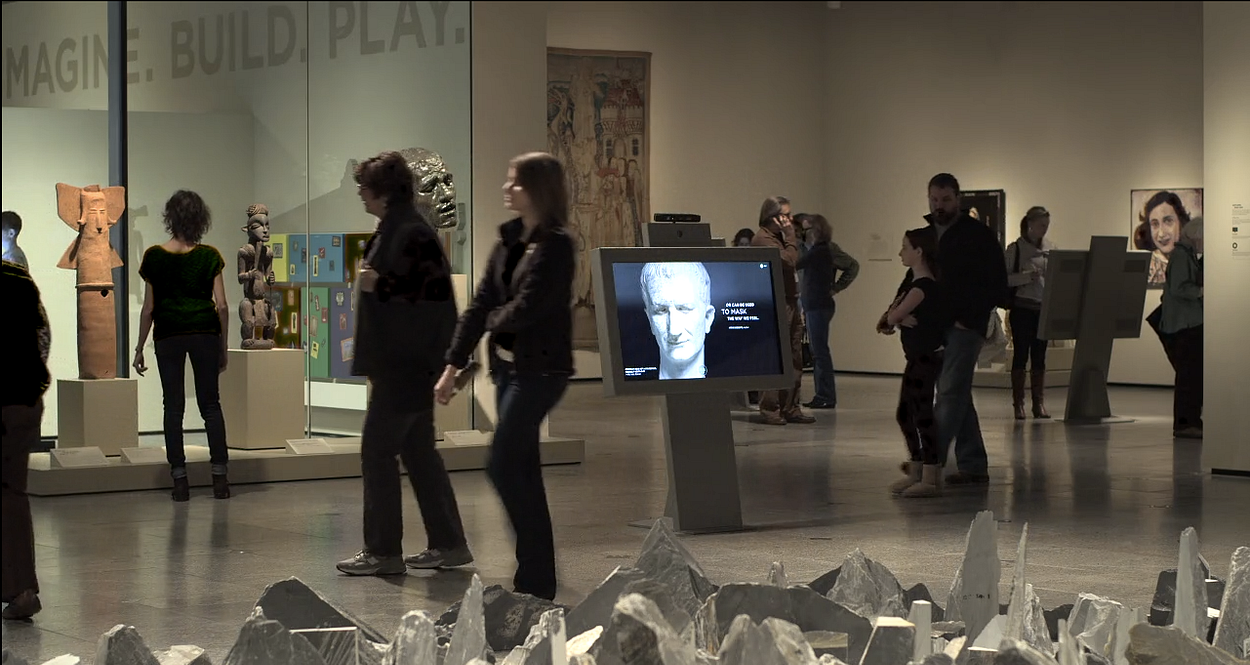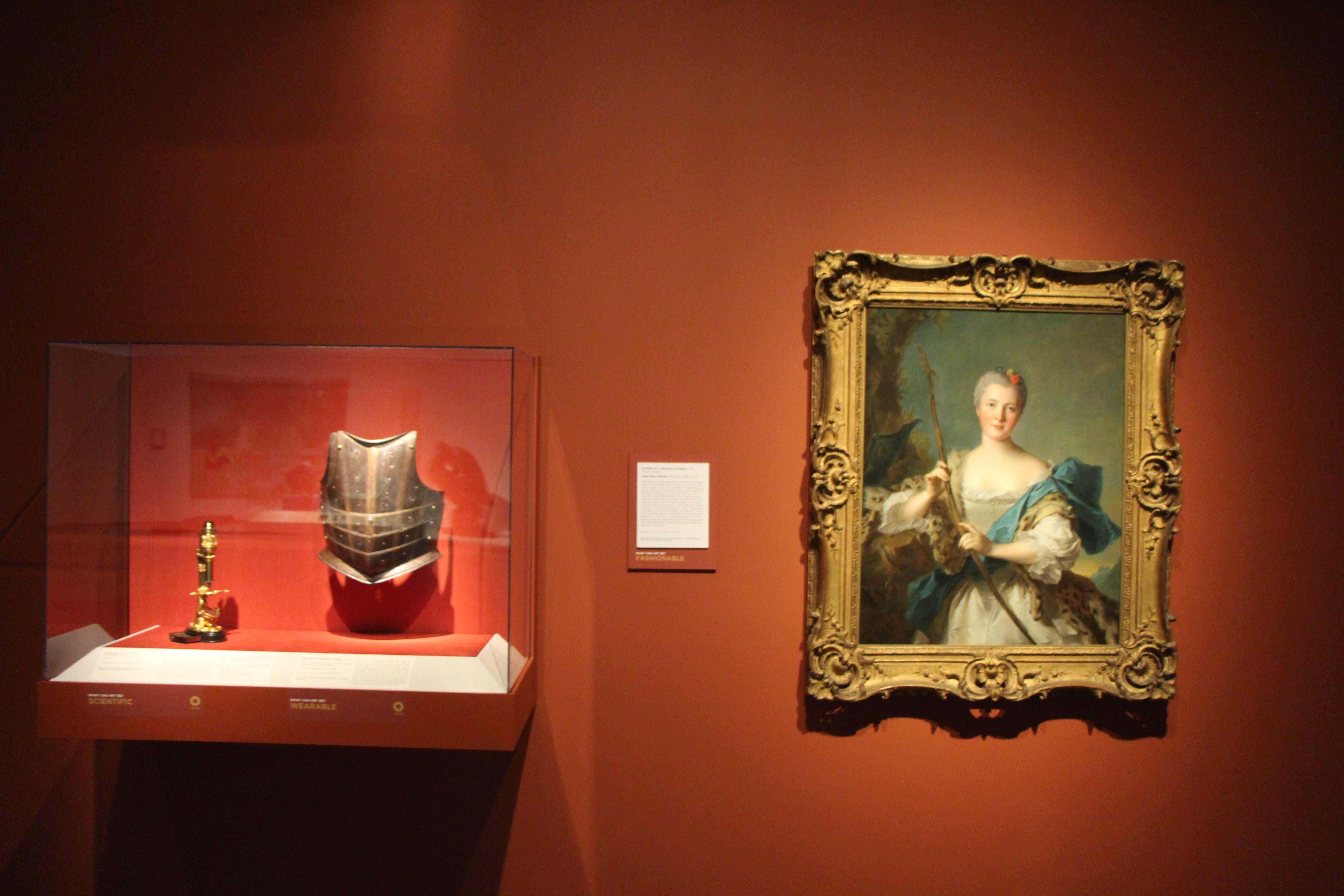Exploring the New Installation of ArtLens Exhibition: Why Iteration Matters
- Blog Post
- Digital Innovation

ArtLens Exhibition is an experiential gallery that puts you into conversation with masterpieces of art, encouraging engagement on a personal, emotional level. Image courtesy Shawn Green for Cleveland Museum of Art.
ArtLens Exhibition is an experiential gallery that uses innovative technology to put the viewer into conversation with masterpieces of art, encouraging engagement on a personal, emotional level.
The new installation of ArtLens Exhibition explores the theme: “what can art be?” Visitors are invited to engage and connect with 21 new artworks from across the CMA’s collection through new technology including gesture-based 3D artwork models, the ability to scan all artworks for more information through Artlens App, and new visitor-generated content on the digital beacon. In the essay below, learn more about this new installation from Jane Alexander, Chief Digital Information Officer at the CMA.
Iterative Process
The new installation of ArtLens Exhibition that opened on June 14, 2019, represents my favorite iteration to date. As always, there are innovative, awe-inspiring digital activities, but what makes it such a successful venture is the CMA’s talented, cross-departmental team that worked closely to create an exhibition that not only works, but supports the concept: dive deeper, look closer, and engage with masterworks of art.

Designing the space began in 2010. The CMA’s team embraced rapid prototyping, agile workflows, and especially, iterative design. Effective iterative design requires constant analysis of the interactives, process, and backend while improving without reinventing. For our digital innovation team, a sustainable framework reminds us that our job is never done. Our milieu requires scalability, so we can add onto interactives as needed, modularity, so individual changes can be easily made, and the ability to take a calculated risk and learn from it. Each team member recognizes the dynamism of digital experiences for our visitors. ArtLens Gallery is a living lab for both a museum-wide collaboration and a deep dive for evolving design and process. Since ArtLens Exhibition, formerly known as Gallery One, opened in 2012, each year improvements and additions have been made to interactives, workflow, and backend development to enhance the visitor experience.
“ArtLens Gallery is a living lab for both a museum-wide collaboration and a deep dive for evolving design and process.” — Jane Alexander, Chief Digital Information Officer
Designing for the Digital Native — Removing the Touchscreen
The fundamental design challenge in ArtLens Exhibition is the balance between encouraging interaction with the games and close looking at the art objects. How do we create interactives that are engaging, but not distracting? In the original installation, formerly known as Gallery One, each lens, or digital kiosk, was physically placed in front of art objects. Artworks were situated in a rigid and inflexible arrangement so that the lens could frame the works related to a specific theme or concept. The result was a set of highly engaging stand-alone interactive kiosks that were surrounded by works of art that could not be reorganized or changed — to not break the illusion they were arranged to create.

In this new version of ArtLens Exhibition, artworks can be easily arranged in a flexible manner. We relocated the digital interactives onto the walls of the gallery, creating a collection of artworks that envelop the space. Now the objects are in the foreground of the gallery with the digital interpretation creating a supportive surround. Moreover, the museum can physically rearrange the works of art into any configuration it wants.

In the iteration known as Gallery One, lenses were organized around a pedagogical theme; each artwork served as an example of only one concept. Through visitor testing and feedback, we found that although the interactives were successful, the themes and placement of works in front of touchscreens were confusing to visitors. In the second iteration, we thought about how to shift focus from a digital game to a physical object and back again. ArtLens Exhibition aims to provide visitors with the toolsets to understand how to look at art through the concepts of composition, symbol, purpose, and gesture and emotion.

The new space has been redesigned with a focus on the digital native — people who use digital technology regularly — as well as on nontraditional visitors. In September 2017, ArtLens Exhibition opened with 16 new interactives that intertwined inventive gesture-sensing, eye-tracking, and facial-recognition technology with masterworks of art.
The Latest Iteration
On June 14, 2019, ArtLens Exhibition reopened with 21 new artworks from across the collection — from medieval to decorative arts to contemporary — that represent the best examples of the digital concepts. The objects, which will rotate every 18–24 months, can be associated with multiple concepts, and the interactives are organized around teaching users all the concepts relevant to each work of art. In other words, the artwork comes first, and interactivity supports increased understanding of it.

As an inherently iterative space, ArtLens Exhibition seeks to push the boundaries of innovation, providing visitors with the tools to look closer at art. The current reinstallation incorporates 3D projected models that can be zoomed and manipulated to see all angles of an artwork. Visitors can explore objects in the CMA’s collection like never before — rotating them digitally to see the tops, bottoms, and interiors. In addition, all 3D objects are scannable with the museum’s ArtLens App, providing visitors another way to access supplementary content.

An exciting outcome of the last iteration of ArtLens Exhibition was a study by the National Endowment for the Arts (NEA) completed by the CMA’s evaluation and analytics team in partnership with the consulting firm Rockman et al. This study found that “people who visited the ARTLENS Gallery demonstrated greater gains in their level of art understanding and knowledge.” Over the past year, the digital team has been collecting data through the Meraki endpoints located throughout the museum. Our Meraki data shows where visitors travel when visiting the museum. One key finding of this data is that those who spend at least five minutes in ARTLENS Gallery spend more time in the rest of the museum than those who do not visit the interactive gallery.

Overall, our flexible physical design allows us to explore and experiment with more adaptive concepts. In this reinstallation of ArtLens Exhibition, the artworks are also connected by an overarching theme: “What can art be?” While the CMA provides one possible answer to this question, we also encourage visitors to share their own responses.
This blog is the first in a series highlighting the new installation of ArtLens Exhibition. In the coming weeks, Jennifer DePrizio, director of interpretation, and Jim Engelmann, exhibition designer, will focus on the art selection and design processes. Maddie Armitage, ArtLens Gallery fellow, along with Howard Agriesti, chief photographer, will be discussing the new 3D photogrammetry. Finally, Hannah Ridenour, research manager, will talk about the NEA study and tool kit.
As a leader in digital innovation, the CMA’s ArtLens Exhibition has received several awards this year, including Silver for Experiential Art in the Media, Visual Communications & Entertainment category at the Edison Awards and Gold for the Participatory Experience and Permanent Exhibition Design categories at the Grands Prix Awards.
